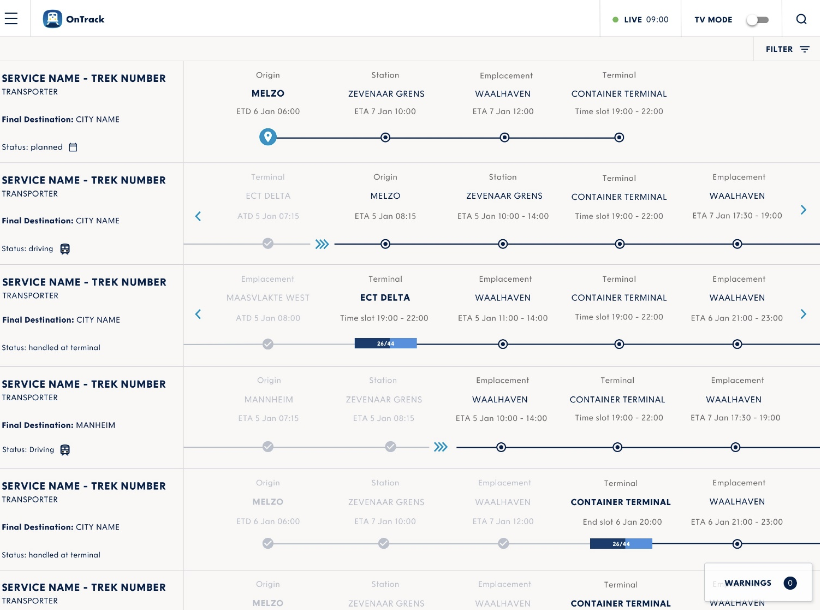Port of Rotterdam launches app with real-time insight rail freight flows

The Port of Rotterdam Authority has launched OnTrack; an application for real-time insight into rail freight flows within the port and the handling of cargo at its terminals. It presented the application to the public at the Freight & Terminal Forum, during the conference Improving Rail Terminal Efficiency.
Over 250 international rail connections run to and from the port of Rotterdam. At present, most terminals use their own planning system and standards for rail transport and most of the relevant information is exchanged by telephone or email. The new OnTrack application combines data of the various parties in the rail chain and enriches it with smart business algorithms, explained Arno Larooij, product lead at the port authority.
One system
To further optimise the transport of cargo by rail between the Port of Rotterdam and the hinterland, the relevant market parties need more insight into the planning and status information of rail freight flows and terminal handling, the port authority argues. “With the application, we want to increase transparancy of rail freight traffic at the port”, said Larooij.
“There are many different parties with many different systems in place. This is one single system, which rules out customer interaction. The system feeds information into the application, which can then be used by the customers. They are just required to share their data”, he explained.
“We are very happy to be working with one system only. As a rail freight carrier, we are always adapting to new regulations and new systems. Doing all of this manually is an additional barrier to our operations. We are basically doing double work. This work is now simplified”, said Gerban Kooman of Rotterdam Rail Feeding.

Use of OnTrack
Carriers can use OnTrack to gain insight into specific freight handling at the terminal. The application shows the number of containers or cars that have been loaded or unloaded and when the operation is finished. Deviations from the scheduled time slot immediately become apparent – in other words, the carrier no longer has to rely on various websites or telephone calls for updates.
Terminal operators in the Port of Rotterdam can use OnTrack to gain a better insight into the expected and actual departure times of trains calling on their facilities. OnTrack’s real-time notifications allow all parties to anticipate on deviations more effectively, and consequently optimise the deployment of personnel and capacity. In the near future, OnTrack will also be made available to rail operators and inland terminals.
“We can now inform all parties involved with one single mouse click. This means that all these parties have the same information at the same time, which results in much more efficiency. This in turn results in less loss of the scarce capacity available”, Kooman commented.
Sharing
OnTrack was developed and extensively tested in partnership with a number of different market parties under the project name HAROLD. This month, the application will be taken into use by nearly every carrier and terminal involved in the transportation of cargo via the Port of Rotterdam. The application can also be rolled out to other ports in the Netherlands and abroad, Larooij explained. “We do not want to keep this for ourselves. We want to share the information with others as well.”
At the same conference, a similar application was presented by An Cant, business solutions architect at the Port of Antwerp. The tool is called the Rail Traffic System (RTS), a web application used to optimise communication between all the parties involved in rail transport. :The main functionality of the first version is planning and real time monitoring of trains. Railway undertakings can reserve a terminal slot via RTS”, Cant explained.
You just read one of our premium articles free of charge
Want full access? Take advantage of our exclusive offer





